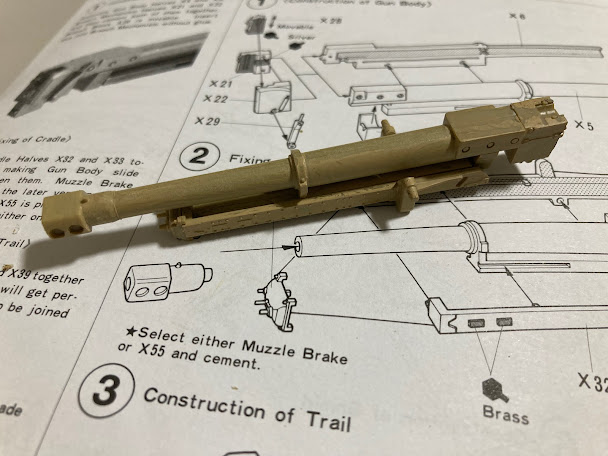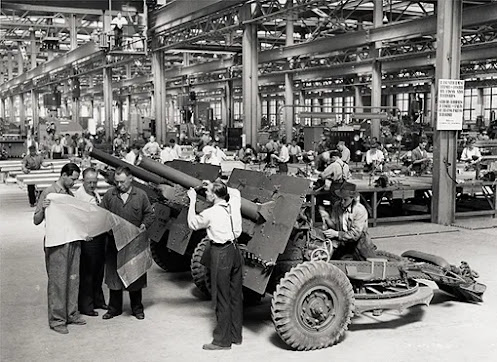Building the gun.
The 25-pounder with a calibre of 3.45 inches (87.6 mm), was one of the most outstanding field artillery pieces used by British and Commonwealth forces in the Second World War, being durable, easy to operate and versatile.
The fit isn't too bad as you can see. Just a bit of emery cloth on the seams.
Now we need something to sit it on.
My friends with me in my workshop...
The 25-pounder was separate-loading; the shell was loaded and rammed, then the cartridge in its brass case was loaded and the breech closed. In British terminology, the 25-pounder was called "quick firing" (QF), originally because the cartridge case provided rapid loading compared with bag charges, and was automatically released when the breech was opened.
Let's build the shield too...
The gun and limber are shaping up.
Putting some paint on it. A quick coat of sandy paint. That's sand coloured not containing sand.
A coat of sand for the main elements and a touch of dark grey for the tires.
An important part of the gun was the ammunition trailer ("trailer, artillery, No 27"). The gun was hooked to it and the trailer hooked to the tractor for towing. The gun did not need a limber and could be hooked directly to a tractor. The trailer provided the brakes as only a hand-brake was fitted to the gun carriage. The trailer carried ammunition; thirty-two rounds in trays (two rounds per tray) in the trailer protected by two doors.
Ammunition was also carried in the gun tractor with the detachment and various gun stores. Some stores, such as sights, were carried cased on the gun. Each section (two guns) had a third tractor that carried ammunition and towed two ammunition trailers.
The Mk 2 Ordnance on Mk 1 carriage added a "super" charge in a different cartridge.
In 1943 a separately bagged "increment" charge was added; used with the Super it provided higher velocity for anti-tank use. The introduction of the increment to super was only possible following the addition of the muzzle-brake in the previous year.
Finishing the details and any outstanding parts and putting it all together.
The gun detachment comprised the following:
No 1 – detachment commander (a sergeant)
No 2 – operated the breech and rammed the shell
No 3 – layer
No 4 – loader
No 5 – ammunition
No 6 – ammunition, normally the "coverer" – second in command and responsible for ammunition preparation and operating the fuse indicator.
The official "reduced detachment" was four men.

























Comments
Post a Comment